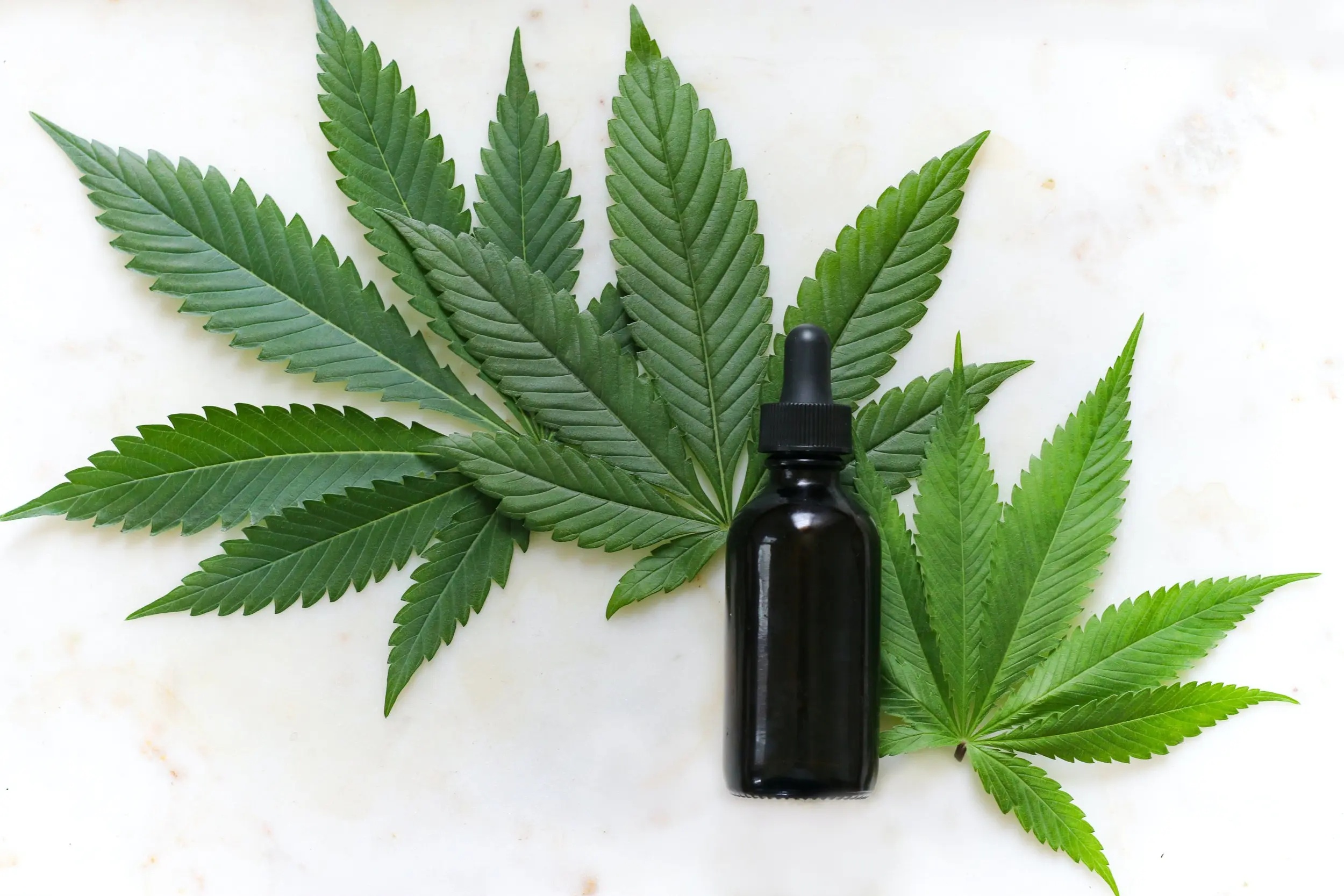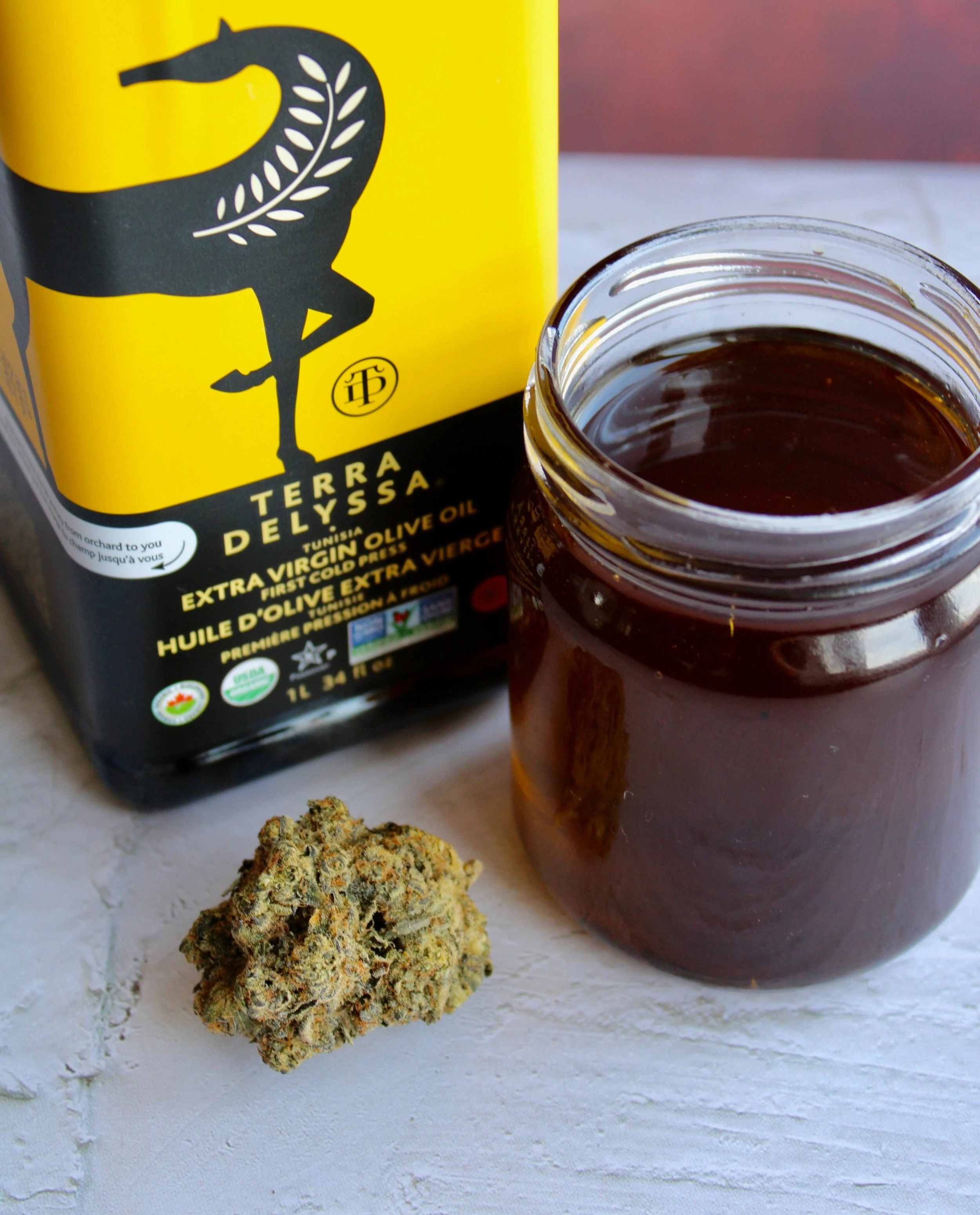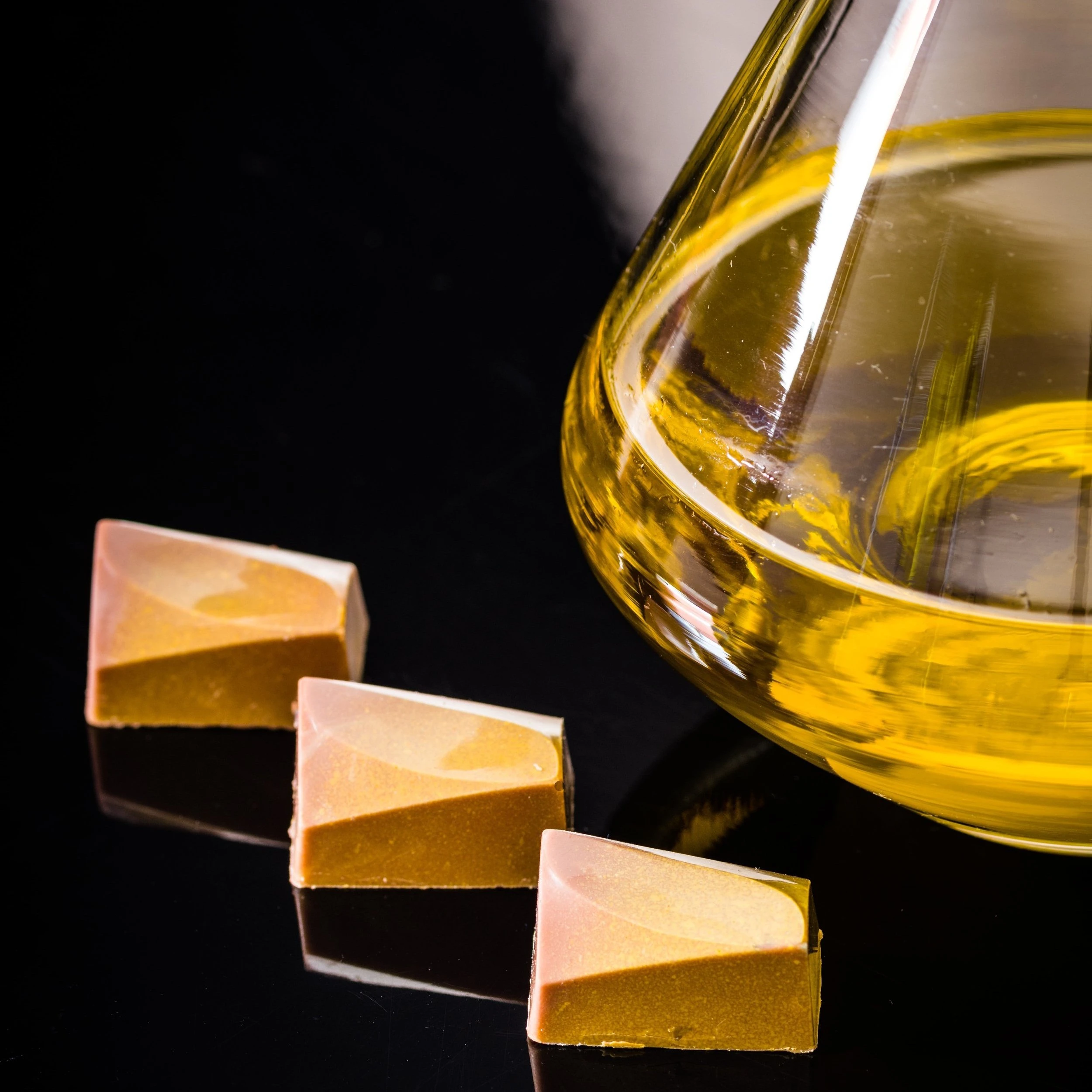
Disclaimer: This post may contain affiliate links where I may earn commission from qualifying purchases. Information presented in this post is intended for entertainment purposes only.
Cannabis infusions are products that combine the potent cannabinoids in decarboxylated cannabis with another ingredient, such as butter, MCT oil, or coconut oil. However, the cannabinoids may also be added to water or another liquid using a dissolvable cannabis powder.
With the arrival of nano-technology, more cannabis-infused products are flooding the market and changing how people consume cannabis. In this article, we will be discussing cannabis infusions, how to make cannabis butter or oil, and dosing.
Photo by Kimzy Nanney on Unsplash
Why Make Cannabis Infused Oils?

Photo by the Cannabinista
There are many reasons to learn how to make cannabis oils for your cannabis infusions. Some of the most crucial include:
- Make your own edible products
- Take control of quality
- Avoid using allergens
- Make full-spectrum products
There are a limited number of cannabis-infused edibles on the market. If you want to make unique cannabis edibles, you can make them as freely as you want, as long as you have cannabis oil ready for infusion.
While making your own infusions, you can exercise complete quality control throughout every process, avoid any ingredient that triggers your allergies and make a truly full-spectrum product that will encourage the entourage effect.
What Makes Ingestion Different from Inhalation?
When you eat cannabis, it takes somewhere between 45 minutes to two hours before you can feel any of its effects. These effects can last from 4 hours to 8 hours or even more, depending on the potency of the product. When you smoke or vape cannabis, it takes around 5 to 15 minutes for the effects to kick in. However, the effect only lasts around 2 to 4 hours.
Since ingestion has a different onset and length of effects, edibles are great for those who want to experience longer-lasting relief throughout the day. Nevertheless, edibles are not ideal for people who want to feel immediate effects or those who do not wish to stay high longer than necessary.
Why Do Edibles Produce More Intense Effects?
There are multiple ways to consume cannabis, and each method has its own advantages and disadvantages. Ingesting provides a more intense experience than smoking or sublingual administration. Whenever cannabis is infused into a carrier oil and ingested, it must undergo digestion and be processed by the liver before it takes effect.
During the metabolic process, the liver converts THC into 11-Hydroxy-THC. This compound has a smaller molecular structure and can easily enter the bloodstream and the nervous system. It binds better with the CB1 receptors and can produce a more intense psychoactive experience.
How to Use Cannabis-infused Oils
You can use cannabis-infused oil as a substitute for regular oil in a wide variety of recipes. You can make scrambled eggs, brownies, salads, and other food preparations. All you need to do is replace your regular oil with canna oil. However, be careful with the dosing.
There is one thing to consider, though. Do subject the oil under intense heat because that will destroy the cannabinoids you worked hard to decarb and infuse into your food. Whenever you use a stovetop, maintain a temperature below 200°F. Never go beyond 250°F. If you are baking, aim for 350°F or lower it to 340°F in case of temperature fluctuations. Do not go beyond that temperature to preserve the potency of the cannabinoids.
You may infuse cannabis into MCT oil, coconut oil, olive oil, and other oils and use it as a topical skincare solution. Your skin contains various cannabinoid receptors and will respond to the cannabinoids in topical applications.
How to Make Cannabis Oils in 5 Steps

Photo by Massimo Adami on Unsplash
1. Choose a Carrier Oil
THC, CBD, and other cannabinoids are fat-soluble compounds. Hence, they easily bind to fat, butter, and glycerin. These oils have high smoke points but never let the heat reach above 250°F to avoid damaging the cannabinoids. You have the freedom to choose your carrier oil, but it should be appropriate for your chosen purpose. Below are some of the most common choices.
Butter is a popular choice for making cannabis infusions because it is used as a common ingredient in many recipes. Butter starts to burn 302°F, which makes it a good option for baked recipes.
Olive oil is a healthy oil rich in antioxidants. It has a smoke point of 405°F and makes a good option for infusing salad dressings, pesto spaghetti, salad dressings, and the like.
Avocado oil is another healthy fat option that can help reduce cholesterol. It has a high smoke point of 520°F and is great for making soups, stir fry, and muffins.
Coconut oil is a natural alternative to animal oils. Unrefined oils provide a distinct coconut flavor, while refined coconut oil is rather tasteless. Refined coconut oil has a smoke point of 400°F, while unrefined coconut oil has a smoke point of 350°F. The only downside to this oil is it remains solid at room temperature.
MCT oil is fractionated coconut oil with a smoke point of 320°F. It is perfect for smoothies, skincare products, and sublingual administration. It is a great alternative to coconut oil if you want a carrier oil that stays liquid at room temperature.
2. Prepare the Cannabis Flower
Choose a cannabis strain based on your personal preference. It is essential to weigh the flower carefully to calculate the dosing accurately. You can rely on the information provided by the cannabis flower seller to make correct dosing calculations.
If your infusions have a high dosage, you can always dilute the oil after the infusion process. Dilution is useful when you want to lower the dosage of each serving of edible you make. For instance, if a recipe calls for two tablespoons of butter, you can use one tablespoon of cannabis-infused butter and another tablespoon of regular butter.
It is possible to use the whole flower for infusion, but it is better to grind it into smaller pieces to make the infusion process a lot easier. Be sure to avoid grinding the flower too finely to make it easier to strain later on. Using an electric grinder may cause it to be ground too finely. Hence, use your hands to break the buds apart or use a manual grinder.
3. Activate Your Cannabis
It is always important to decarboxylate your cannabis. Keep in mind that your cannabis flower contains very little CBD or THC. Instead, it contains the precursors THCA and CBDA. These compounds are the acidic versions of the cannabinoids and will not deliver the expected effect. Decarboxylation using heat activates these precursors and turns them into the potent CBD and THC.
THC and CBD activate at different temperatures. THC activates between 200-265°F, while CBD activates between 230-290°F. Of course, the process of decarboxylation is optional. If you want to experience the therapeutic properties of CBDA or THCA, you can always skip this step.
Instructions:
- Preheat the oven to 245°F or the temperature that your preferred cannabinoid activates.
- Line the baking sheet with aluminum foil or parchment paper and place the ground cannabis onto it.
- Bake the cannabis for 30 minutes. Get it out of the oven and let it cool.
4. Infuse the Carrier Oil
You will need:
- Carrier oil of choice
- Dried cannabis flower
- Crockpot (slow cooker) or double boiler
- Strainer or cheesecloth
- Mason jars
- Wax paper
- Digital thermometer
Instructions:
- Place the decarboxylated flower and carrier oil in the mason jar.
- Place wax paper on top of the jar before tightening the lid.
- Put the jar inside the double boiler or slow cooker. Fill it with water as high as the mixture within the jar.
- Turn the heat on and allow it to simmer for 4-6 hours using a slow cooker or 6-8 hours using a double boiler. Stir occasionally every 30-60 minutes.
- Use a thermometer to monitor the temperature. Make sure it stays between 180-200°F. Add more water as it evaporates.
- After infusing the oil with cannabis, allow the jar to cool.
- When the temperature is cool to the touch, strain the infusion using a strainer or cheesecloth.
- Place the oil in a container and label it properly. Store it in a cool dark place. If you choose to infuse butter, you may keep it in the fridge.
Calculate the Potency
You may want to invest in a THC tester to inspect the potency of your cannabis infusion. However, if you do not have a tester, you can still do a rough estimate as long as you know the potency of your cannabis flower.
Instructions:
- Convert the weight of your flower into milligrams.
- Multiply the milligrams by the percentage of cannabinoids in your chosen cannabis flower.
- Multiply the total milligrams by 90%.
- Divide the total milligrams by your serving size.
Suppose you used 3.5 grams of flower. That equates to 3,500 milligrams of cannabis flower. If your cannabis strain has a 20% potency, multiply that with 3,500 to get 700mg. Multiply it by 90% to get 630mg. Multiplying by 90% prevents underestimating how much THC is in the infusion.
We now have 630mg of THC from our 3.5 grams of cannabis flower. When we infuse half a cup (24 teaspoons) of butter with our cannabis flower, we end up with 26.25mg of THC per teaspoon of butter.
Related Topic: 6 Simple Steps to Making the Best Cannabis Infusions
How to Dose with Cannabis Infusions

Photo by CRYSTALWEED cannabis on Unsplash
Ingesting cannabis lasts longer than other consumption methods. Hence, starting with a low dose and going slow is crucial. Always be sure to calculate the dosage of your infusions before ingesting them. As long as you make a good estimate on your cannabis servings, you can avoid ingesting too much at once.
One of the best ways to get consistent dosing with solid infusions like butter and coconut oil is by placing them in a mold after infusion. Cannabinoids can settle at the bottom of the infusion after some time, so it is best to place the cannabutter or canna-oil into a mold right after the infusion process while the cannabinoids are still evenly dispersed. Doing this keeps the potency even throughout the infusion as it solidifies.
Always start with a low dose of 2.5mg if it is your first time ingesting edibles. Wait for at least 12 hours before you go for your next dose. If the microdose does not give you any desired effect, you can increase the dose by 1mg increments until you discover your ideal dose. Always play it safe and start slow. We also recommend that you document your entire experience as a future reference.
How to Consume Cannabis Infusions
Now that you know how to make oil from cannabis, how do you consume it? The best way is to make edibles. However, you may also ingest it directly or administer it sublingually.
If you want to feel the effects of cannabis almost immediately, place a carefully measured amount under the tongue. This method is called sublingual administration. You typically use a medicine dropper to measure the oil. Place a few drops under the tongue and let it sit for at least 30 to 60 seconds. The blood-rich membranes under the tongue absorb the cannabinoids and deliver them directly to the bloodstream. It may take 5 to 15 minutes for the effects to manifest.
If you are not in a hurry and want to experience the full effects of cannabis for at least four to eight hours, you can ingest a measured dose of cannabis oil directly. However, if you want to get creative with your cannabis infusions, we suggest you follow our fun recipes. We recommend that you start with the Chocolate Chip Cookies (the best cannabis butter recipe) and Blueberry Banana Smoothie.
For more amazing options, check out our infused recipes and have fun while you are at them. Always remember to keep your dosage in check.
Looking for your next vape? Use code CANNABINISTA for 15% off your next PAX product.
Last Words
If you are up to the challenge, making cannabis infusions is a delightful experience. Sure, many steps are involved, but the pursuit of making the best and most potent cannabis products in your kitchen is a fun prospect. Yes, you can easily buy ready-made cannabis infusions at a local dispensary, but it is not as challenging as making one yourself.

Hey I’m Anna, also known as Cannabinista™
I’m a cannabis content creator, recipe developer, and enthusiast for the ancient plant. I’ve dedicated my platforms to helping you create a healthy relationship with cannabis through mindful consumption and providing education that resonates with the modern consumer.
My ultimate goal is to debunk traditional stoner stereotypes and myths, by showcasing the world of cannabis through my POV.

